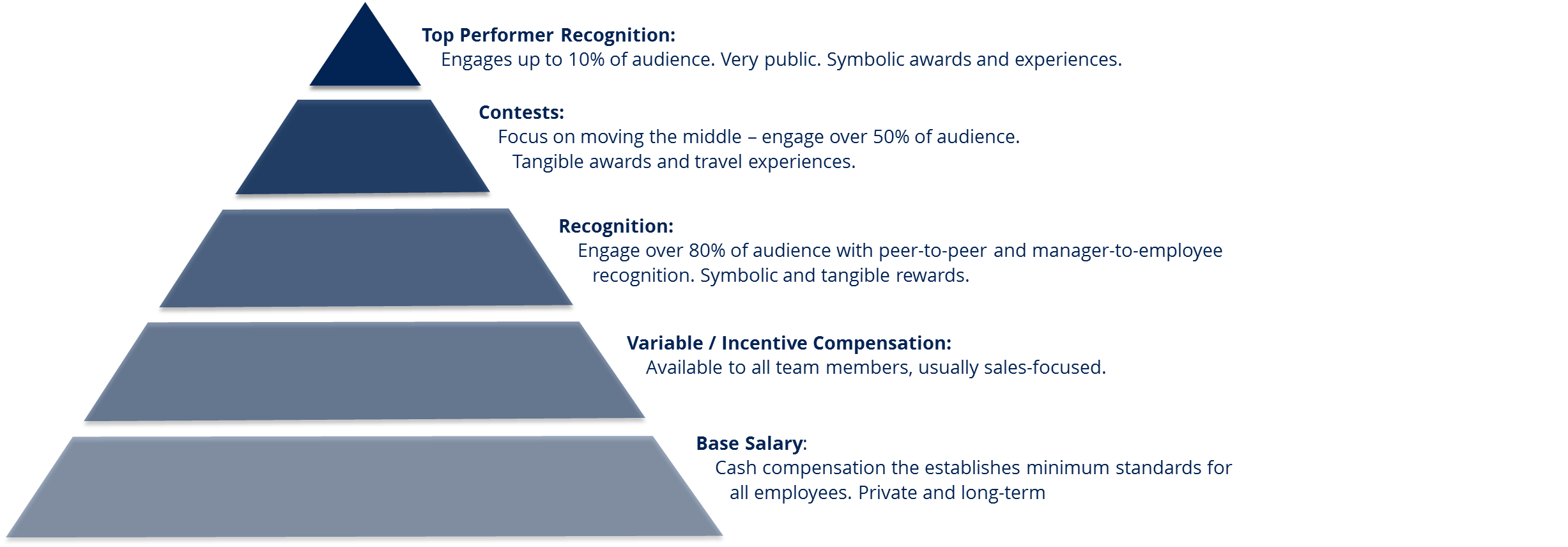Are cash-based incentives a thing of the past in automotive sales?
Written by: Jaime Cabrera
(View Author Bio)

The automotive industry is undergoing fundamental changes. According to Auto News Canada, Canadian automotive dealerships are considering innovative ways to compensate sales staff due partly to shrinking margins, high turnover rates, and a competitive talent marketplace.
What can Original Equipment Manufacturers (OEMs) in the automotive sector do to support their dealers without incurring additional costs?
Our experience in applying behavioural economic principles into our clients’ sales incentive programs show that diversifying the rewards opportunities not only drives sales, but increases employee retention and customer satisfaction.
Right Reward. Right Place. Right Time.
For some years, we’ve advocated a point of view called “move the middle”, where incentives are designed to engage salespeople across the spectrum of performance and productivity. We conducted a study using sales results gathered during non-incentive periods from 150 companies and more than 50,000 salespeople. The study found:
- More net lift is available from the bottom 80 percent than the top 20.
- Any incentive program aimed at the top 20 percent eliminates more than half of the top producers.
Salespeople are intrinsically motivated to succeed, but relying solely on intrinsic motivation is simply not enough. By diversifying your cash-only incentives to include a variety of hedonic rewards (experiential and luxury merchandise rewards) triggers extrinsic motivation which will keep salespeople motivated longer and help meet sales targets more often.
Our research shows that a greater variety of incentive types are associated with increased sales. If you truly want to influence results, cash won’t get you there. Cash disappears into day-to-day necessities but hedonic rewards inspire emotional commitment.
Use incentive programs to drive results beyond sales
Incentives can be used to drive different business outcomes by creating excitement and focus on specific objectives for a limited time period, to inspire people to change behaviour or perform at a higher level. For example, our Learn2Earn™ programs have proven to be very effective in better educating the sales force which, in turn, helps them be more effective with customers. One client implemented a customer-centric program which in the first year yielded a 31 percent decline in employee turnover and a four-point increase in customer satisfaction.
Final thoughts
By diversifying existing sales incentive programs to include a variety of non-cash incentives—especially hedonic rewards—OEMs will be able to help their dealers to yield positive results to revenues, employee retention, and customer satisfaction. Incentives should align with business strategies and goals and be designed to achieve a specific result – establishing priorities and motivating behaviour.
When redesigning or implementing a sales incentive program, consider the following:
- Despite the benefits of moving away from the legacy structure, people will be put off that you have taken something away and replaced it with something new.
- Avoid replicating the earning opportunities, measures or rewards that were common in the legacy program. Do something different so that the new incentive program is not so easily compared to the old program. Make the new program a platform for a new message, new branding, and new focus.
- Consider that sales uplift runs 5-10 percent higher during busy periods because the opportunity to sell is greater. When salespeople are putting in maximum effort, they increase their closing rate and their compensation plan should reflect that.
To learn more about how BI WORLDWIDE Canada can help motivate your sales force with a total rewards incentive strategy, feel free to reach out to us at canada@BIWORLDWIDE.com.
The best way to get started is to get in touch.

















